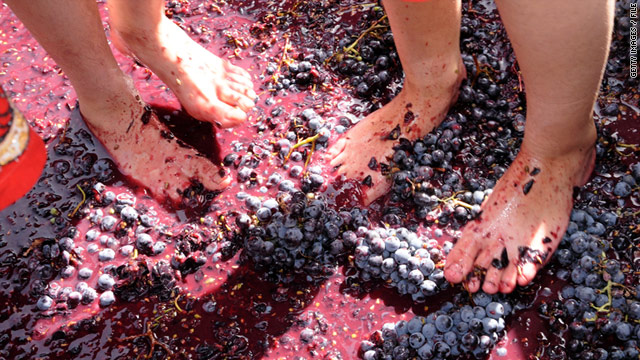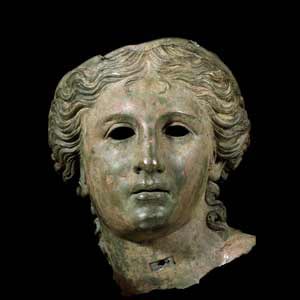Vachagan Vagradyan and Marina Vagradyan
(Pardon the Google translation. The link to the Russian original can be found at the bottom of the post.)
• RANGE OF ESTABLISHED NAMES:
-Zorats car (Goshun-Dash). The name "Zorats car" is a translation of the Turkish name of the monument - «Koşun taş», made and entered into circulation in 1970. The authors found that the word «Koşun» in Turkish translates as "number", "order". Thus, it is more accurately translated as the Turkish name "Shark Car" (Stones in the series), which corresponds to the structure of the monument.
-Karahunge. This name was introduced into the trafficking AP Herouni in the mid 1990's. Based on the mention of the monument near the Art. Orbelian (in the 13 th century) the names of villages "Karundzh. Another argument is based on reading the words "Karahunge" as "Karahunj" in what is viewed desire to give the name of building functionality that is not enough substantiated.
-Zietz Karer and Dick Dick Karer (Ցից քարեր and Դիք - դիք քարեր). Both names translate as Protruding stones. Common names taken from the nearby villages. They reflect a structural feature of the monument.
-Angha Karahunge (Griffin Karahunge). Apparently, the Turkish expression "Goshun-Dash" was translated from Armenian. Armenian expression might sound like say, "Shark Karer" (stones in a row) or something like that. Then the translation would sound "goshun Rocks, not" das goshun. In order for the word "stone" in Turkish, translated from the ancient Armenian name expressed in the singular, it was necessary that the word "Kar" (stone) in the Armenian name was also presented in the singular. For example, "car-a-Shark" (a stone series). In this case, is likely to Turkish translation would sound exactly like "Goshun das.
It turned out, however, that the Turkish word "goshun in some Armenian dialects also used in the meaning of" group ". It turns out that the initial version of the Armenian name of the monument could be "Karahumb" (a group of stones), or close within the meaning of "Karapundzh" (a bunch of stones), which is in the Syunik dialect sounds like "Karahunge. Thus, the ancient original (doturetskoe) Armenian name of the monument is likely to sound like "Karahunge. It was translated into Turkish as "Goshun das" and came to us and Turkish.
In the 13 th century witnessed a village near the monument with the name "Karahunge. Today, in Armenia - in Syunik and Karabakh, there are three villages with the same title Karahunge. Nearby, at least two of them testified megalithic structures. Thus, Karahunge word, meaning "stone flower", the Armenians, apparently in antiquity were called circular megalithic structures. That's their name nearby village called Karahunge. Means "Karahunge" not a proper name and common name - the generalized name of such buildings.
The proper name of building - the subject of this study could be "Angha Karahunge" (Griffin Karahunge), since it reflects the constellation Cygnus (ancient Sumerian and whose name - Constellation neck) on Earth, and probably their ritual and religious function was devoted to the cults of the neck symbolizing the death and eggs, symbolizing life.
• Structural and functional features.
-The overall structure of the monument reflects the constellation Cygnus (neck) (see Fig. 1). Stones, corresponding to the stars of Cygnus, the neck, placed on pedestals and mobile. All the other stones buried in the ground.
-The overall structure of the monument is that suggests its astronomical significance, namely:
-Determine the summer solstice. This is evidenced by a corridor, opening from the central oval layout of the monument and to the north-east. According to calculations by Academician Herouni, about 7500 years ago at the summer solstice the sun rose in this corridor. Today the point of sunrise rejected because of the precession of the Earth.
-Tracking the movement of stars. On some rocks are made through holes, some of which look at certain points in the sky, along with other vertex adjacent stones form a system of sight (see Fig. 12). This clearly gives a reason to assume that when some light appears at the top of this stone, it becomes the basis for certain conclusions vremenny'h.
-It is also possible sale and other functions of ritual and religious significance. None of the stones of the central oval layout of the holes there. This suggests a ritual and religious use layout. The authors suggest the existence of the cult of the neck and eggs.
• Geographic features
-Geography construction so correlated with the shrine, the cemetery of the village Angehakot, the old church of the village / villages Brune Verishen (on the former site of a pagan temple) and the ritual place called Portakar "that this series on Earth reflects the main - the vertical line of stars is Cross constellation Cygnus-Vulture (see Fig. 2).
-This constellation is also reflected in the names of these terrestrial areas. Thus, name of the village Angehakot means "Griffin big" and corresponds to the brightest star in the constellation Vulture (Cygnus) - Deneb.
-Village Brun corresponds to β Cygni - star Albireo. Despite the Arabic sound of the word, its root - Bireh, is not explained in Arabic. Relevance to the face - Al-Bir-eo. Particle-eo is clearly a suffix.
-The central star is called Sadr corresponds to the monument. Word of Sadr Arabic for breast part bird - the body. This applies to the construction of the oval in the center of the monument, which reflects the cult of eggs in the past. The latter also shows an image fingerboard, presented in at the other end of the Armenian highlands shrine Portasar (better known under the name oturechennym "Gebekli Tepe"), where the center of the image engraved on the egg (see Fig. 3).
-With regard to compliance with the ritual place called "Portakar and η Cygni, at first glance it is purely structural in nature (see Fig. 4).
-If the card connected by straight lines having a semantic link four villages - Angehakot, Brun, Karahunge and Brnakot, you get an almost regular parallelogram. The monument is located on its large diagonal, dividing it into parts votnoshenii ¼ to ¾ (see Fig. 5).
• Relationship to other megalithic structures
-Stonehenge (United Kingdom). This famous buildings near the city of Salisbury in the south-west England, has some relevance to our Syunik monument.
-Absolute coincidence of names. In the words «Stonehenge» and «Քարահունջ» («Kara (h) undzh"), the first roots have the same meaning - "stone." To explain the second root - «henge», British scientists have put forward two versions:
o Hedge - fence
o Hang - hanging, swinging.
Both options are clearly not sufficiently convincing.
The second root - «(h) undzh" in the word Karahunge explained Syunik adverb and means "flower", "beam". The word "bouquet" was translated into English as «bunch». Consider it possible that the words «bunch» and «henge» relate to each other just like the word «(h) undzh" and "Punj and have a common origin.
-Common structural and functional elements. Both buildings are stacked stones corridors to the north-east and in ancient times made it possible to determine the summer solstice. This proves that the creators of both structures have the same knowledge and understanding of astronomy and is a carrier of the same culture (Fig. 6)..
-Portasar (Western Armenia), better known under the name oturechennym "Gebekli Tepe.
-In the territory Portasara discovered monument like Stonehenge. The author finds - German archaeologist Schmidt dating his 10-th millennium BC (See Fig. 7).
-On some stones of the monument depicts a different animal. One of the stones is particularly rich in images (see Fig. 8a).
Dedicated to the circle element explicitly - image of the neck. It is easy to see that the wingspan neck asymmetric. If we impose on him a silhouette "Griffin Karahunge", then they are exactly coincide (see Fig. 8b).
According to the authors on this stone shows the starry sky - divided into constellations. Intuitively, this can be seen by comparing the sky map with the image on the stone (see Figure 9)..
Thus, we arrive to an important conclusion. The authors of these two facilities were supported by the same culture.
-Close to facilities certified Portasara village called Brnashen, which is identical to the names of villages and Brun Brnakot located near the Syunik structure.
• Other Armenian-British similarities.
-Historiographical information about the common roots. In the ancient chronicles of England - Anglo-Saxon Chronicle says: "The first inhabitants of the island [Britain] had been shaved, who came from Armenia" (see Fig. 10).
Writing about the British researchers followed the hypothesis first translator of the Chronicle, which have des Bede Venerable instead of the word "Armenia" was to be written "Armorica" what has changed as a result of random error of a medieval scribe.
The authors failed to show that the probability of error is negligible. For this presented a lot of multilateral arguments:
o Psychologically, the probability of a mistake is very small, since the copyist instead of "Armorica" could mistakenly write "Armenia" if the latter (note the title is very far from England, the country) was more than upotrebimo, "Armorica" - Celtic name of Brittany - the nearest to England region neighboring France.
o The manuscript is written kaligraficheski. This means that each word letter by letter loomed. Therefore, the probability of random error is reduced even more.
o Geographical preface (where it is said about it) is present, at least in two different books of "Chronicles" written by different authors in different places and at different times. The probability that at the same place, same error allowed a few people, reduced to a negligible value.
-Etymology of the word "Brit". Since the word «brit» clearly has Indo-European origin, it must be regarded as consisting of two parts - the Indo-European root "br" and the suffix "-um" belonging to the same linguistic family.
Let's start with a well-known. Suffix "-um" and "-id" show affiliation to the root, the origin of the root word-concepts. For example, a "Semite" (belonging to the genus Sema), or a druid (belonging to the genus ", etc).
Conclusion: the word "Brit" means belonging to the genus "br".
In Armenian roots, "br" can be found in the verb "walked". By Acharyanu verb "walked" in ancient language has several meanings. Including - "carving, engrave", ie write a cutting tool on a hard surface. Thus, the notion of "writing" in the Armenian language of the second millennium BC (When the emigration of Britons thought to occur) sounded like "walked". We assume that the word "Brit" and "walked" are one and the same root as "br".
Thus, we propose a version according to which the word "Brit" means "belonging to a tribe who can write."
In our opinion the same meaning ("who knows how to write") is the name of the village Brun, since it consists of a root "br" and the suffix "-un", which is very old and means the ability to perform the action indicated by the root. For example, "kpchel" (stick) - kpchun "(sticky)," trchel "(to fly) - trchun (bird flying)," walked "(write) -" Bruno "(writer). In addition, we note that this part of the Syunik subethnos has the nickname "Grohner" "writing", ie people who can write.
-Genetic data on common descent. British geneticists together with Armenian specialists carried out a study whose results were published in the most popular in this area of the journal Human Genetics. These results indicate that the genes of the Armenian population of Armenia in the male line - haplogroups are very close haplogroup population British Isles, and from vnutriterritorialnyh haplogroups, closest to the British are the Karabakh and Syunik haplogroups (see Figure 11).
Russian original
Edited by Zartonk, 12 November 2010 - 02:42 PM.


































